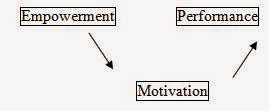INDEPENDENT DEMAND VS DEPENDENT DEMAND
In inventory management, demand of inventory can be classified into two parts. They are independent and dependent demand.Independent demand is the demand of final products which are not inter-related with each other. It is generally created by outsiders like consumers, suppliers and other companies. It is unknown. In order to determine the quantities of independent demand, varieties of techniques like customer survey, trend analysis, forecasting models etc. can be used. Dependent demand is directly related to the demand of another parts and components of products or product itself. It is relatively straight forward computational. It means, stock can be easily computed on the basis of the stock needed at upper level. For example , if an auto mobile company plans to produce 50 cars per month, then obviously it will need 200 wheels and tires. The demand for wheels and tires is dependent demand, where as the demand of cars is independent demand which will not be a part of another ...
